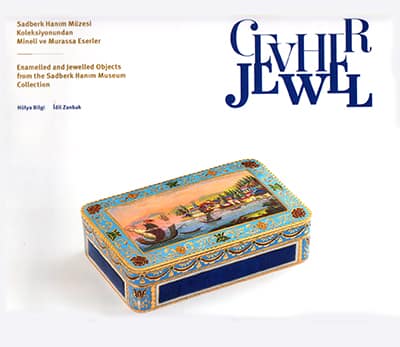311 pp, color figures, pb, in Turkish-English bilingual.
The “Jewel” exhibition, which has been organised this year on the occasion of the 35th anniversary of Sadberk Hanım Museum, presents enamelled and jewelled objects in the Turkish-Islamic Section of the museum. The exhibits reflect Ottoman tastes in objects set with diamonds, emeralds, rubies and other precious stones, and exquisitely crafted enamelled artefacts. They include objects for a wide variety of uses, such as belt buckles, writing boxes, pen cases, spoons, coffee cup holders, mastic jars, sherbet cups, pocket watches, fans, fly whisks, tobacco pipes, snuff boxes, brooches, Ottoman decorations and slippers. Throughout history glittering gold and silver objects studded with precious gems have been one of the most eye-catching manifestations of imperial splendour. Apart from the surviving jewelled objects themselves, archive documents, the writings of Ottoman authors and foreign travellers, contemporary paintings and miniatures demonstrate the extensive use of precious metals and gems to adorn items ranging from book bindings to costume in Ottoman culture. As in many Ottoman period arts and crafts, jewelled objects reveal a distinction between the work of court artists and ordinary craftsmen. Since the jewelled and enamelled objects in the Sadberk Hanım Museum collection tend to follow court tastes, most of them were evidently used and worn by people in or close to court circles. They display a wide diversity in terms of function, and although the majority date from the late Ottoman period, overall they cover a broad time span from the 17th century to the 20th century, and include some produced in Europe for the Ottoman market as well as those produced in the Ottoman Empire over this period.




